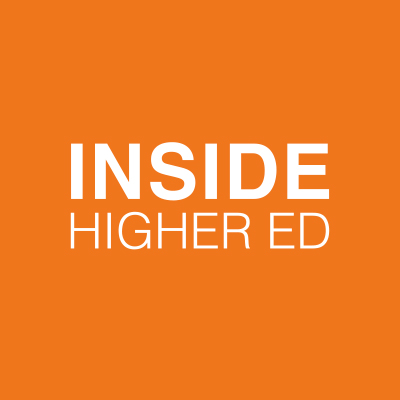
Inside Higher Ed
November 14, 2022 Admissions, Enrollment Management Trends
Most international enrollment recovered from a steep decline during the pandemic. The total number of international students enrolled at U.S. institutions increased by 4 percent in 2021-22 and an additional 9 percent this fall.

Inside Higher Ed
November 11, 2022 Enrollment Management Trends, Value and Affordability
The U.S. Education Department will move forward with parts of the FAFSA Simplification Act next fall, which will require colleges and universities to update their total cost of attendance calculation. Guidance has been provided to institutions to calculate the new figures.

Inside Higher Ed
November 07, 2022 Admissions, Enrollment Management Trends
A recent survey found that diversity among faculty and the student body is the top priority for students when searching for a potential college in which to enroll. Relatedly, only 9 percent reported receiving personalized and relevant outreach from prospective institutions.

Inside Higher Ed
October 24, 2022 Admissions, Enrollment Management Trends
Direct admissions kicked off last year in the United States by the company Concourse. This year, 125 colleges around various cities are making admission offers via Concourse. The Common Application is also experimenting with direct admissions, with 14 colleges involved this year.

Inside Higher Ed
October 13, 2022 Admissions, Student Success
The national average composite ACT score for the high school class of 2022 was the lowest in over three decades. The trend of declining average scores, however, began long before the pandemic. While more students took the exams this year, the numbers were still fewer than in 2020. There are also vast differences in the scores of students by race and ethnicity.

Higher Ed. Dive
October 05, 2022 Admissions, Enrollment Management Trends
Federally funded institutions must send their application counts to the U.S. Department of Education each year. The new IPEDS reporting policies could prompt institutions to examine the barriers for students to finish their college applications, which could help eliminate roadblocks that prevent underrepresented students from applying.

Inside Higher Ed
September 26, 2022 Admissions, Enrollment Management Trends
Diversity continues to be a top recruitment priority for university leadership. At the annual NACAC meeting, Admissions professionals across the country discussed efforts and strategies with an intentional focus on BIPOC enrollment.

Inside Higher Ed
September 12, 2022 Admissions, Enrollment Management Trends
U.S. News rankings will no longer punish schools where most student don’t submit SAT or ACT scores. In their new calculation, they increased the weight of high school class standing and average graduation rate for those schools that report SAT/ACT scores for less than 50 percent of new entrants. For test-blind schools, rankings value is equal to the lowest test score in their rankings.

Higher Ed. Dive
September 08, 2022 Enrollment Management Trends, Student Success
Researchers found that 5.6% of undergraduate and graduate students surveyed identified as caregivers. 3.2% cared for someone who was chronically ill or aging, and 2.9% cared for a minor. These students were disproportionately women, graduate students, financial aid recipients, and enrolled part time. Such students had lower average GPAs and a higher likelihood to report depression and anxiety symptoms. It is recommended institutions proactively identify such students and design policies to minimize emotional and academic risk factors.

Inside Higher Ed
September 06, 2022 Enrollment Management Trends, Student Success
As institutions navigate employees’ desires for flexibility in work location and hours, there is agreement that student needs should be central to decision-making. College and university officials may not realize, however, that most students don’t expect or feel they need in-person, non-faculty staff on campus. Students indicated via a recent survey, however, that certain departments should always have at least some staff physically working on campus, such as financial aid and counseling centers.